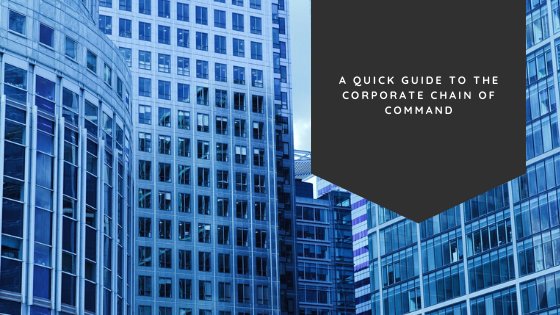In an organization, the “chain of command” refers to the reporting hierarchy and relationships, from bottom to top.
Not only does a clear and unambiguous chain of command establish accountability, but it also fosters productivity, creates lines of authority, and illustrates decision-making power. In short, a proper corporate chain of command and org structure ensures that every job position, task, department, and project has a designated person who assumes responsibility for performance.
Why Chains of Command Are Important
Every employee in an organization plays a distinctly different role, has a different level of experience, and is at a different point in their career. A clear chain of command provides a line of support to the more “junior” and less experienced employees, and a way for them to confidently develop their skills. It also creates a collaborative culture, a sense of safety and belonging, and mitigates risk.
To ensure that an organization operates at its best, regardless of which industry it operates in, it needs a strong and clear chain of command. And although there is no shortage of different structures, especially now in a world that is a lot more socially aware and “woke”, most large organizations use the classic three-tiered approach: Senior management, middle management, and regular “frontline” employees.
Senior management titles typically include roles such as Chief Executive Officer (CEO), Chief Financial Officer (CFO), Chairman/Vice Chairman, President, Director, and Owner. These are the executive-level positions that hold the most weight and decision-making power who are typically responsible for appeasing and delivering value to shareholders.
Further down the ladder, middle management roles may include department heads Vice President roles (e.g. VP Marketing, VP Product Design), Manager, and Supervisor. These individuals are more responsible for the day-to-day running of the organization as those in charge of their respective departments, divisions, and teams.
Finally, we have regular employees on the frontline. These are individuals who do not manage other employees or departments. Examples can take any job role such as sales representative, HR specialist, marketing executive, etcetera.
The Advantages and Disadvantages of Chain of Command Org Structures
There are several pros and cons to the chain of command structure. And because the pros tend to outweigh the cons (if, of course, you agree with them!), many organizations follow the hierarchical chain of command structure in favor of more “modern” alternatives.
The Advantages
In a chain of command structure, accountability and responsibilities are clearly and unambiguously defined. By clearly showing who is responsible for what, employees have more clarity regarding who they should approach with a specific query or when they need access to a specific resource, among other things. The chain of command also eliminates reporting uncertainty that can exist in smaller businesses where employees may be more inclined to go straight to the top.
With the help of the chain of command structure, things simply get done more efficiently. Each employee has one direct supervisor or boss, with each supervisor or boss, in turn, having their own supervisor or boss. When each individual knows who to turn to with a query, work is done more quickly, problems are resolved sooner, and relationships are easier to maintain and control.
Finally, the chain of command establishes order and creates discipline. Higher-level managers give their directives, and these are carried out by mid-level management and regular employees.
The Disadvantages
The chain of command structure is not without its faults though, especially if it is implemented thoughtlessly. For example, employees may feel more “confined” to their respective departments and be less inclined to share ideas or collaborate on projects with people from other departments. This inhibits internal innovation, as do risk-averse managers who may be more inclined to dismiss ideas with potential from employees “lower” down the chain.
Also, because decisions have to travel up the chain of command through multiple people, it can sometimes take a long time for messages to be conveyed to the right people so that decisions can be made. This can be very frustrating for mid-level managers and regular employees working on time-sensitive projects.
Finally, the chain of command inherently instils a feeling of competitiveness or territoriality. This is because higher-level employees, those in mid- and upper-level management especially, recognize that they have a sort of “power” over those below them. In some organizations, this can lead to lower-level employees resenting management and create distrust.
Creating Your Own Chain with Org Charts
When you design a chain of command for all the right reasons and implement it carefully, you establish a culture of efficient workflows, clear communication, and mutual respect up and down the chain. When designing your own chain structure, it is important that you think carefully about which roles you need, so as to not overcomplicate the chain and include lots of unnecessary layers. If you do this, you are more likely to create some of the problems that we discussed above and wipe out any net efficiency improvements.
If you think that the classic hierarchical chain of command org structure is right for your organization, why not start mapping one out?
Using our leading org chart tool Organimi, you can build your own fluid, dynamic org charts with a simple drag-and-drop interface. With our org chart tool, you are free to chop and change your chain of command structure as many times as is needed until you have perfected it. And with our free trial, you have nothing to lose—try out Organimi completely free.

